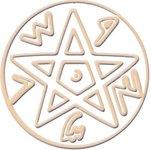Sepphoris
Sepphoris the historic capital of the Galilee, is located in the center of the Lower Galilee, 5 km west of Nazareth. Both literary sources and archaeological finds indicate that the city’s population also included pagans, heretics, and Christians living alongside the Jewish population. Hellenistic Sepphoris was built on its hill and slopes. Early in the second century CE, the city spread considerably eastward, boasting an impressive grid of streets with a colonnaded cardo and decumanos running through its center. Various public buildings were built in the city, including a Roman temple, a forum, bathhouses, a theater, a monumental building identified as a library or archive, as well as churches, synagogues, and some other structures dated to the early Byzantine period. Most of the common people lived in simple houses while the wealthy lived in large, spacious, well-planned dwellings. The architectural layout of these large structures is impressive, as are the more-than sixty colorful mosaics from the third to sixth centuries CE uncovered in its private and public buildings. The variety of depictions have parallels in other cities of the Roman and Byzantine East, not only enhancing the ancient ruins of Sepphoris but also providing invaluable information about the city and its population. The Hebrew University expedition has been active at Sepphoris from 1985 and is responsible for uncovering most of the findings at the site.

Publications:
Z. Weiss, The Sepphoris Synagogue: Deciphering an Ancient Message: in Its Archaeological and Socio-Historical Contexts (Jerusalem: Israel Exploration Society, 2005).
Z. Weiss, “Private Architecture in the Public Sphere: Urban Dwellings in Roman and Byzantine Sepphoris,” in From Antioch to Alexandria: Recent Studies in Domestic Architecture, ed. K. Galor and T. Waliszewski (Warsaw: University of Warsaw 2007), 125–136.
Z. Weiss, “Sepphoris on the Eve of the Revolt against the Romans in Light of Josephus’ Writings and the Archaeological Finds,” in The Great Revolt in the Galilee, ed. O. Guri-Rimon (Haifa: Hecht Museum, Haifa University, 2008), 21–26 (Hebrew).
Z. Weiss, “From Roman Temple to Byzantine church: a Preliminary Report on Sepphoris in Transition,” Journal of Roman Archaeology 23 (2010), 196–217.
Z. Weiss, “Sepphoris, From Galilean Town to Roman City, 100 BCE–200 CE,” Galilee in the Late Second Temple and Mishnaic Periods, eds. David A. Fiensy, and James Riley Strange (Minneapolis: Fortress Press, 2015), 53-75.
Maya Sherman, Zeev Weiss, Tami Zilberman, and Gal Yasur, “Chalkstone Vessels from Sepphoris: Galilean Production in Roman Times,” Bulletin of the American Schools of Oriental Research (in press).
Z. Weiss, Sepphoris: A Mosaic of Cultures, (Hebrew) in press.


